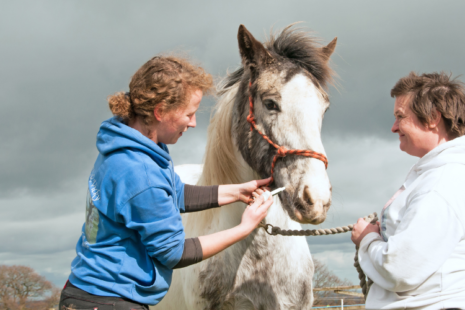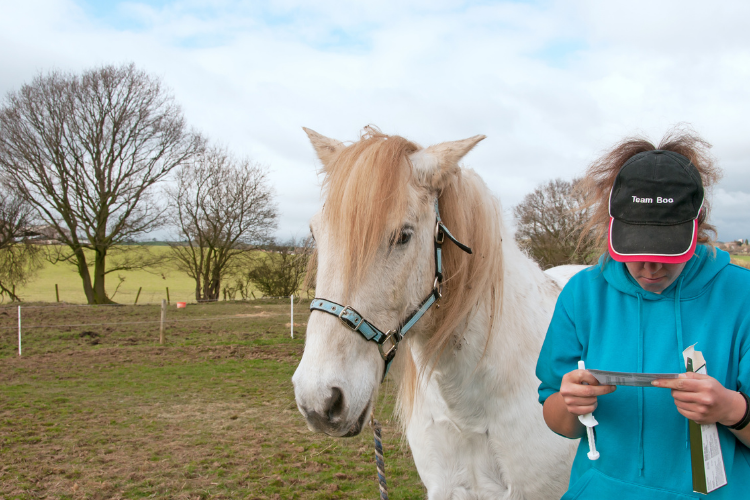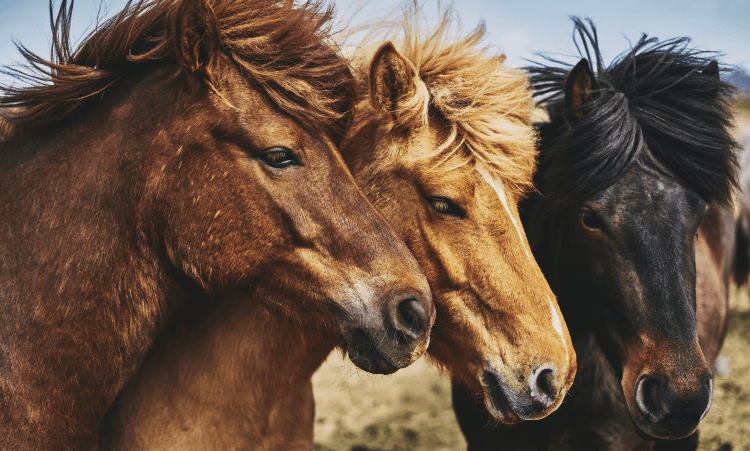Thursday 24th February, 2022

Let’s face it, horses are not invincible. At some point or another, every grazing horse will pick up various parasitic worms from their environment. But don’t worry! In order to develop immunity, horses need to carry a small worm burden (the number of parasites within a host at a particular time).
However, if this burden gets too high, this can be detrimental to your horse’s health. As the owner, you need to make sure that the worm burden does not go above the recommended level. Failure to do so could result in colic, diarrhoea and a myriad of other worm-related problems for your equine friend. In some cases, the effects of worm-related gut damage can be long lasting, so keeping your horse healthy should be a top priority.
Here’s our guide on how to worm a horse.
Ready to worm your horse? Here’s a quick step by step guide on how to worm a horse with paste.
Before treating your horse, it’s important to carry out a worm count, which tests for the presence of roundworm and redworm. Simply collect a faecal sample on a day when worming is due and send it off to your vet to be tested for eggs of parasites. Throughout the year, a worm count should be carried out every 12 weeks.
However, elderly horses and foals tend to have weaker immune systems. so it’s best to do a worm count every 4-6 weeks for these equines. Note that treatment is only necessary if there are 200 eggs per gram or more present. If you administer treatment when it’s not necessary, this will eventually lead to resistance and treatments will be less effective in the future.
You can also test for tapeworm. All you need to do is get a saliva sample to detect the level of tapeworm-specific antibodies. Alternatively, you can get a blood sample from your horse to determine whether your horse has or had a tapeworm infection. Usually, your horse will only require treatment if you get a high positive result back.
As you get ready to worm your horse, it’s important to check how heavy your horse is. You can either do this through your veterinarian, or you can use a weighbridge or wrap weighting tape around your horse’s girth line.
It’s important that you give the correct dose based on your horse’s weight. After all, underdosing can lead to resistance building in any surviving worm. And it goes without saying that overdosing can become a problem, particularly for foals and smaller horses.
Having said this, slightly overdosing should not have any adverse effect on your horse. For example, if you give a 300kg horse a dose suitable for a horse weighing 325kg, the horse should still be fine and healthy.

Once you know the appropriate dose for your horse, it’s time to administer the treatment. Simply insert the paste into the horse’s mouth.
More times than not, some of the paste will end up on the horse’s lip or will end up on the ground. It’s important that your horse swallows the full dose – otherwise, this will lead to an underdose. A small amount will not be effective. So, it’s worth trying to administer another full dose a few days later.
It’s fair to say that worming a horse isn’t always easy. After all, medicine doesn’t always have the most pleasant taste. Understandably, you may be tempted to sneak up on your horse and jam the paste in their mouths. However, this approach is unlikely to go down well. So, how do you worm a horse who is difficult?
Remember, horses are prey animals, so it’s important to approach your horse casually. That way, your horse will not instantly go into defence mode.
It’s equally important to not stand in front of your horse whilst administering the dose, as this will also put them on edge.
Holding the syringe up to your horse’s face will give you a good idea of how your equine friend will react. If your horse starts to toss its head or stand on its hind legs when you place the syringe in its airspace, then it’s unlikely that your horse will accept the syringe in its mouth.
In such cases, it may be time to start desensitising your horse. Try waving an empty syringe in their airspace, if your horse remains still, retreat and comfort your equine friend with your other hand. This is an example of positive reinforcement known as approach and retreat. Through this process, a horse learns that when they remain calm, they will be rewarded with the removal of the feared stimulus, the worm paste, until eventually, it is no longer afraid of it. Repeat the process again to further desensitise your horse.
You can also begin to desensitise your horse by applying something sweet, such as honey or sugar to an empty syringe. That way, when it comes to the real thing, your horse will associate worming with positive experiences.
If your horse is relaxed, insert your thumb into the corner of its mouth. This will give you a further indication of whether your horse is ready to receive the dose. If your horse’s head remains still, then they’re ready!

A number of years ago, blanket treating was quite common. Today, it is widely known that repeated use of the same wormer can reduce effectiveness. It’s advisable to speak with your vet about the best worming schedule for your horse, based on:
If you’re using Ivermectin, a product designed to treat parasitic worms, it’s advisable to worm your horse no more than every 6 months. Don’t forget! You only need to worm your horse if the number of intestinal parasites is above the recommended level.
Looking for more expert advice for horse owners? Head over to our news section where we cover everything from stabling solutions to training guides.